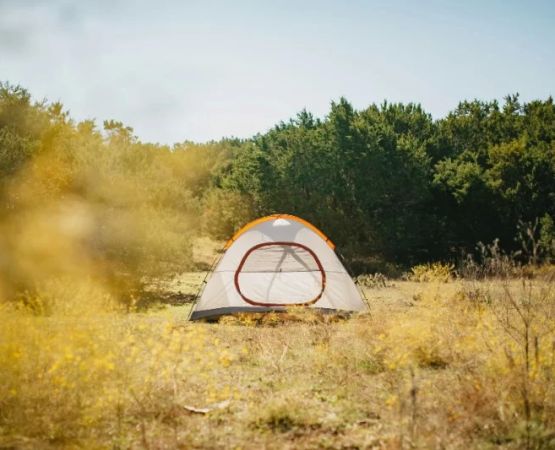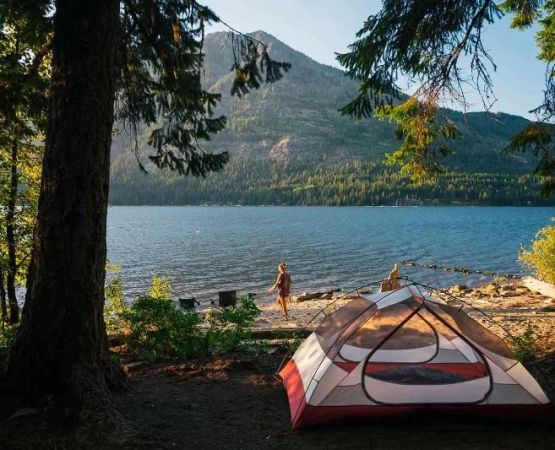Camping is a great way to immerse yourself in nature and escape the hustle and bustle of everyday life. However, one of the biggest challenges campers face is protecting their tent from the elements. Whether you're braving strong winds, heavy rain, or intense sunlight, understanding how to protect your tent is crucial for staying dry, comfortable, and safe. In this guide, we’ll share practical tips for safeguarding your tent, ensuring a pleasant camping experience regardless of the weather.
- 1. Choosing the Right Tent Material for Weather Protection
- 2. Sealing Tent Joints and Zippers
- 3. Using a Tarp for Extra Protection
- 4. Setting Up Your Tent Properly to Withstand the Elements
- 5. Checking the Weather Forecast and Preparing Accordingly
1. Choosing the Right Tent Material for Weather Protection
When selecting a tent, one of the most important factors to consider is the material it’s made from. The material of your tent directly impacts its ability to withstand various weather conditions. For instance, tents made with high-quality polyester or nylon are often more water-resistant, while tents made with canvas offer excellent insulation for colder climates but may require additional waterproofing.
Look for tents that are specifically designed for the types of weather you expect to encounter. If you're camping in a region with frequent rain, a tent with a waterproof coating and sealed seams will provide better protection. For windy environments, consider a tent with a more aerodynamic shape and strong poles designed to resist wind pressure. Choosing the right tent material is the first step in ensuring your camping experience is comfortable and secure.
2. Sealing Tent Joints and Zippers
Even if your tent is made from high-quality material, water can still seep in through the joints and zippers. Sealing these areas is essential for preventing moisture from entering your tent, especially during rainy weather. Many tents come with factory-sealed seams, but it’s always a good idea to inspect these areas and apply a waterproof seam sealer if needed.
Additionally, make sure your tent’s zippers are fully closed when setting up or when you leave the tent unattended. Some tents even offer zippered storm flaps to add extra protection. By sealing the tent’s joints and zippers, you’ll keep your tent dry and comfortable, even during the heaviest rainstorms.
3. Using a Tarp for Extra Protection
A simple yet effective way to protect your tent from the elements is by using a tarp underneath and/or over your tent. Placing a tarp under your tent helps to create a barrier against moisture that may seep up from the ground, while a tarp over the tent provides additional waterproofing in case of heavy rain.
When using a tarp underneath, make sure it’s slightly smaller than the footprint of your tent to prevent water from pooling underneath it. If you decide to use a tarp overhead, make sure it’s properly anchored and doesn’t touch the tent’s fabric, as this could lead to leaks. With these extra layers of protection, your tent will be better equipped to withstand whatever the weather throws at it.
4. Setting Up Your Tent Properly to Withstand the Elements
Proper tent setup is essential to protecting your shelter from the elements. Start by choosing a good campsite, ideally on higher ground to avoid water runoff in case of rain. Avoid setting up your tent directly under trees, as falling branches or debris could cause damage during a storm.
Make sure to stake your tent securely to prevent it from being blown away by strong winds. If possible, position the tent so that the narrowest part faces into the wind to minimize wind resistance. Setting up your tent in a well-thought-out manner will ensure it remains sturdy and functional throughout your stay.
5. Checking the Weather Forecast and Preparing Accordingly
Before heading out on your camping trip, always check the weather forecast for the area you’ll be visiting. This will help you anticipate any adverse weather conditions and pack accordingly. If rain is expected, bring additional waterproof gear like rain jackets, boots, and tarps. For hot weather, ensure you have adequate ventilation and sun protection for your tent.
By preparing for the specific weather conditions you may encounter, you’ll be better equipped to protect your tent from the elements and enjoy a more comfortable camping experience. Staying informed and planning ahead is key to a successful trip in the great outdoors.
Ready to enjoy your next outdoor adventure? Visit Pine Cliff Resort for tips on camping and exploring nature, and learn more about how to protect your tent and gear in all weather conditions!






